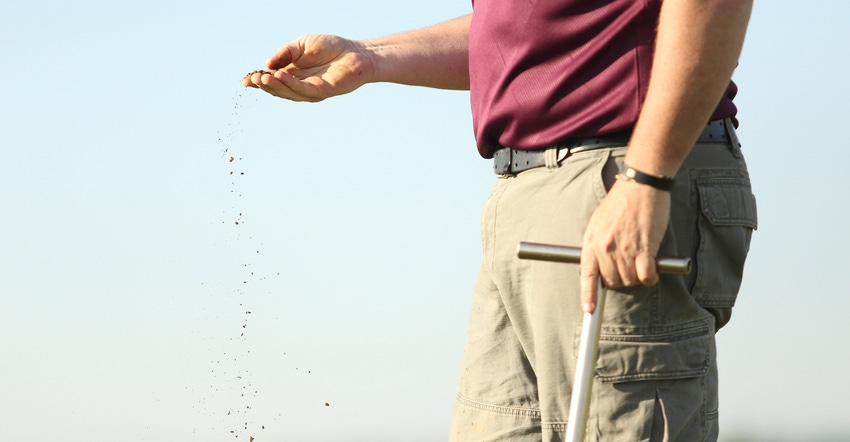January 21, 2020

The 2019 growing season was so wet for so long that many field operations needed to occur when soil was extremely saturated. This caused ruts and deep compaction that farmers will have to contend with this spring.
If that weren’t enough, hard rains kept flushing the soil and roots weren’t able to explore the soil profile enough to take up adequate nutrients. Some fall tillage got done, but not much more.
On the brighter side, many Minnesota farmers still harvested decent crops in areas that had adequate drainage. And soil health, especially in the southern half of the state, is generally good. When I say soil health, I’m referring to three components: chemical (nutrient makeup), physical (soil type, drainage) and biological (microorganisms that live in it).
Good soil health and good soil management may help resolve some compaction that’s occurred. Here are some soil health considerations to remember as spring planting nears:
1. Fertility delays are fixable. Fall fertility programs were affected by our late harvest and early freeze-up. If you didn’t get nutrients applied in the fall, you can still do spring applications. If poor spring weather makes applying nutrients difficult, you may have to increase management practices in-season. The main thing is, don’t allow 2019 misgivings to influence how you manage your 2020 crop.
2. Crop rotation matters. The vast majority of fields that were planted in soybeans in 2019 will be going back to corn in 2020. Because beans got harvested first last fall, we had more time between harvest and freeze-up to get field work like nutrient applications completed across those acres. More time in the field proved to be one of the big benefits of a corn-bean rotation.
3. Fall tillage brings benefits and challenges. If you were able to complete fall tillage, you may have broken compaction layers within the top 10 inches of where you tilled, only to make another compaction layer further down that could inhibit root growth for 2020. If you didn’t do fall tillage and we have a warm, dry spring, you can till then and still be okay. Fall tillage or not, your main concern going into the spring should be how you can best prep the 2020 seed bed.
4. Do an assessment. Use a penetrometer or dig a hole to locate any compaction layers in your fields. If you didn’t get soil tests taken in the fall, you can do so in the spring, when moisture is typically more consistent. If testing is needed, work with your agronomist to determine when and where samples should be taken, note any deficiencies and discuss how and when to remedy them.
5. Have a 2020 plan. After doing any necessary soil testing, continue to work with your agronomist to create a farm plan for tissue testing, side-dressing and other tasks that need to be done. Discuss fertility and planting goals to optimize any applications that need to occur ahead of planting. Communicate your expectations to your agronomist so he or she can make calls accordingly and not be put in a tough spot between either causing soil health issues or not getting an application done.
6. Employ tools. If your soil suffered because of heavy rain, runoff or compaction, there are conservation tools to help identify those spots and restore them to good health. There’s also an active carbon test that can be combined with measuring other soil components to provide an overall rating of where your soil stands physically, chemically and biologically. Your agronomist can tell you more.
Here’s hoping for a drier, warmer spring!
Jon Zuk is a regional agronomist with WinField United in southern Minnesota. Contact him at [email protected].
You May Also Like




